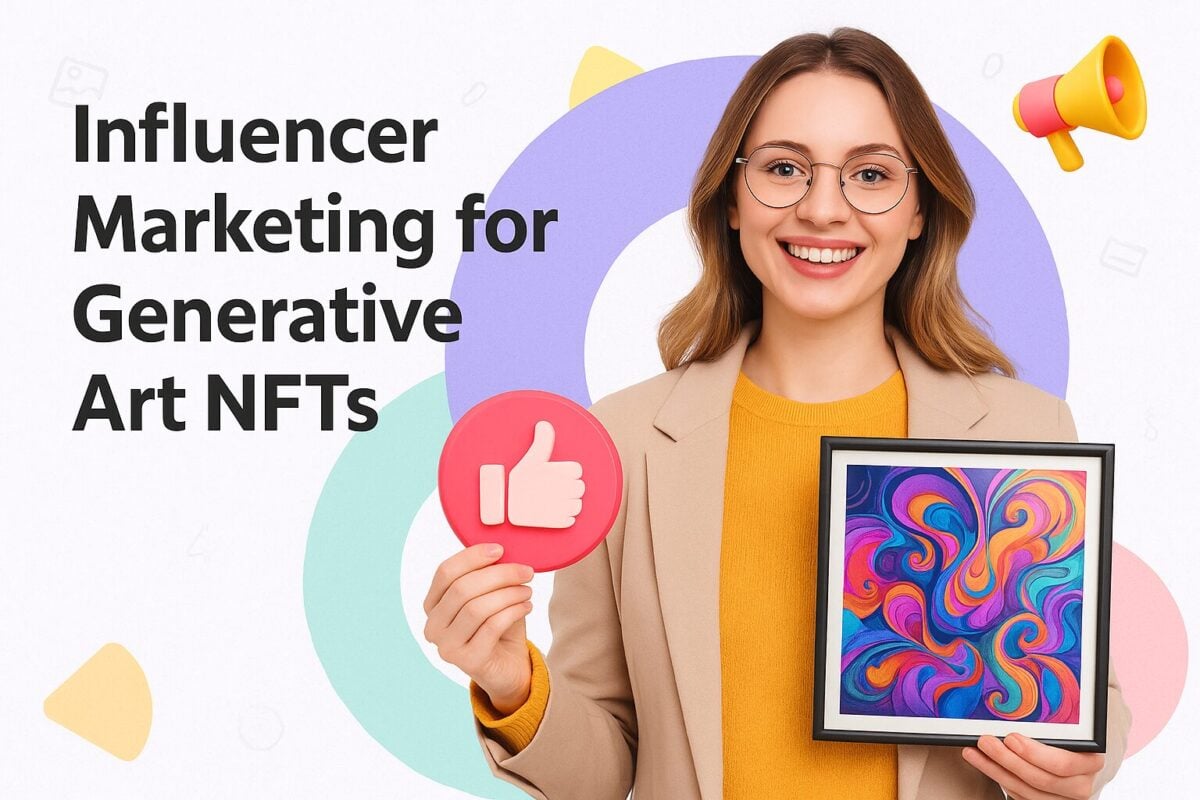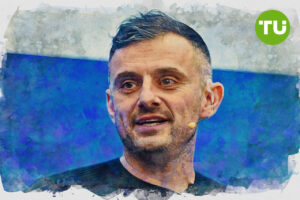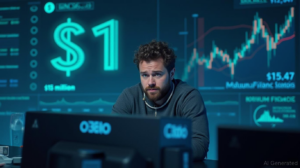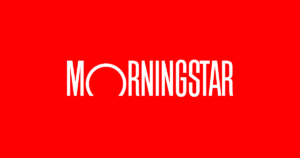Unlocking Success: Influencer Marketing Strategies for Generative Art NFTs

Navigating the Landscape of Generative Art NFTs: Strategies for Influencer Engagement
As generative art transitions from niche experimentation to mainstream presence in NFT marketplaces, marketers face two pivotal questions:
- Grasping the Concept of Generative Art NFTs
- The Essential Role of Influencers in Abstract Art Drops
- Educator and Simplifier
- Community Builder
- Authenticity Advocate
- Tactics and Formats to Enhance Generative Art Engagement
- Live Minting Sessions and Countdown Mechanics
- Tutorial-Style Content (Unboxing, Q&A, “How It Works”)
- Affiliate and Resource Guide Integrations
- Collaborative Drops and Co-Creation Campaigns
- Foundations of Authenticity and Compliance
- FTC Guidelines for NFT Promotions
- Balancing Hype with Honesty
- Measurement and Media Kits for Campaign Success
- KPI Framework Aligned to Funnel Stages
- Dynamic Media Kit Blueprint
- Real-Time Attribution and Reporting
- Outcome-Driven Playbook
- Driving Sustainable Impact with Influencer-Driven Generative Art
- Frequently Asked Questions
- About the Author
- How can brands effectively convey the intricacies of algorithm-driven creativity to foster engaging community experiences?
- What campaign frameworks can ensure influencers provide both technical expertise and meaningful audience interaction?
Recent observations indicate that leading creators are prioritizing educational content, offering tutorial-style insights that simplify blockchain-based scripts. They are also organizing live minting countdowns to create a sense of urgency and encourage real-time participation. Additionally, there is a growing trend of collaborative partnerships where influencers contribute to the creative process, alongside comprehensive compliance guidelines that protect brand integrity in sponsored content.
To enhance campaign effectiveness, data-driven media kits and real-time analytics dashboards are becoming essential tools, allowing for swift adjustments based on on-chain and social media metrics.
This article delves into the operational strategies, phased approaches, and measurement protocols that empower agencies and internal teams to transform generative art drops into scalable, high-impact activations, fostering sustainable community growth and consistent returns on investment.
Grasping the Concept of Generative Art NFTs
To harness the potential of generative art NFTs in influencer-led campaigns, marketing teams must align technical foundations with clear operational structures. By incorporating immutable scripts and unpredictable reveal mechanics into influencer briefs, agencies can effectively translate algorithmic creativity into campaign milestones—such as minting windows, community engagement prompts, and tiered reward systems.
This approach connects the mechanics of art with the tactical frameworks influencers need to execute impactful drops. From a marketing perspective, the inherent unpredictability of generative art serves as a compelling narrative tool. When crafting briefs for these campaigns, agencies should emphasize the unique nature of each mint.
The blockchain-embedded script, designed to be unchangeable, acts as both a verification of authenticity and a reliable audit trail, addressing collectors’ concerns regarding provenance. By highlighting that “the script itself remains unchanged post-deployment,” brands can reinforce trust, appealing to the same psychological factors that drive luxury authentication.
Moreover, the minting process itself becomes an engagement opportunity. Since the final artwork remains unknown until the transaction is confirmed, each collector experiences a “reveal moment,” akin to the excitement of unboxing in direct-to-consumer marketing.
Marketers should treat mint events as product launches, incorporating countdown sequences, teaser visuals of algorithm parameters, and post-mint showcases of rare traits. By showcasing “flow field algorithms generating organic curves” and “probability-based variations in color palette, scale, and margins,” brands can enrich their positioning, aligning technical details with audience intrigue.
From an agency perspective, aligning generative art drops with broader social initiatives or brand narratives requires maintaining technical integrity. Every marketing asset—from one-pagers to media kits—should include clear diagrams of the generative process, code snippets, and simplified explanations of how blockchain immutability ensures authenticity. This transparency not only fulfills due diligence but also empowers brand stakeholders to approve campaigns confidently.
Finally, the diverse outputs of generative art necessitate a community-focused rollout. Marketers must plan for secondary-market communications, tracking which algorithmic variants resonate most, and resharing content generated by collectors. By integrating NFT mint analytics into customer relationship management systems and retargeting ads to collectors who minted specific traits, agencies can sustain post-launch momentum and refine future generative parameters.
By embedding these technical insights into influencer briefs, agencies can align campaign phases with mint milestones—triggering teaser posts at T-minus 48 hours, deploying content spotlighting traits during the launch, and orchestrating live recap streams post-mint. This framework ensures consistent engagement and optimizes conversion pathways.
Additionally, influencer performance metrics (such as click-through rates on mint links and Discord join rates) can feed into real-time dashboards, enabling rapid amplification or adjustments. Merging generative mechanics with structured campaign operations guarantees that every influencer interaction—from unboxing-style reveal videos to rarity-spotlight discussions—delivers measurable returns against clearly defined key performance indicators.
The Essential Role of Influencers in Abstract Art Drops
Influencers play a crucial role as intermediaries between abstract generative art projects and target audiences, translating complex code into engaging narratives that drive collector action. When marketing teams brief influencers for a generative art drop, they must recognize three fundamental influencer roles: educator, community builder, and authenticity advocate.
To operationalize these roles, agencies should develop an Influencer Brief Framework consisting of three layers:
- Technical Alignment: Clear outlines of script architecture, rarity tables, and mint schedules.
- Creative Freedom: Defined creative boundaries (brand assets, key messaging, required disclosures) alongside opportunities for influencer expression.
- Performance Triggers: A timeline of content deliverables linked to on-chain events (e.g., “post a rarity spotlight at 100 mints,” “host a Discord AMA when floor price exceeds a certain threshold”).
This structured brief equips influencers with precise campaign mechanics, clear creative guidelines, and measurable KPIs, transforming abstract art drops into coordinated, data-driven influencer activations.
Educator and Simplifier
An influencer’s ability to translate technical jargon into accessible insights significantly impacts campaign reach. By starting with phrases like “If you’re new to generative art, this TikTok is for you,” creators can appeal to a broad audience, onboarding newcomers without alienating seasoned enthusiasts.
Marketers should provide influencers with concise talking points—such as “immutable script on-chain” or “probability-weighted trait generation”—paired with relatable analogies (like unboxing). This dual approach enhances perceived value while minimizing comprehension drop-off.
Community Builder
Generative drops thrive on network effects. Influencers utilize platforms like Discord, Twitter Spaces, and TikTok comment sections to unite collectors around shared excitement. By inviting audience participation—through Q&A sessions on algorithm parameters or polls on preferred color palettes— influencers can transform passive viewers into active stakeholders.
Agencies should create influencer toolkits that include community engagement strategies: scheduled AMA sessions, branded channel graphics, and templated “mint milestone” announcements to maintain momentum before, during, and after the launch.
Authenticity Advocate
In a crowded NFT market, authenticity sets brands apart. Influencers excel when they exhibit genuine vulnerability—sharing their creative journeys, challenges, and personal insights. Brands should avoid overly polished influencer content; instead, they should provide framework briefs that highlight key messages (e.g., algorithm novelty, scarcity parameters) while allowing influencers to incorporate their own experiences with generative art.
This approach humanizes abstract drops and fosters trust, which is essential for higher engagement and conversion rates.
Embedding this structured brief framework accelerates campaign consistency and scalability: influencer onboarding time decreases, content approval cycles shorten, and mint velocity peaks. This precision ensures that every influencer post aligns with on-chain momentum, enhancing floor price stability and boosting secondary market activity.
Marketers can replicate this framework across multiple drops, adjusting parameters based on real-time analytics and feedback, ultimately creating a repeatable engine for generative art NFT success.
Tactics and Formats to Enhance Generative Art Engagement
To maximize collector activation at every stage, align each tactic with distinct campaign phases:
- Pre-Launch (Awareness & Hype)
- Launch (Conversion & Reveal)
- Post-Launch (Retention & Secondary Engagement)
Integrate these formats directly into influencer briefs with clear timing triggers and performance benchmarks. A phase-based playbook ensures that countdown mechanics create urgency on mint day, tutorial content educates during peak interest, affiliate guides extend conversion opportunities, and co-creation campaigns maintain momentum.
By embedding this sequencing into briefs, agencies provide influencers with a structured roadmap—complete with calendar slots, asset templates, and KPI targets—transforming ad-hoc content into a cohesive, high-velocity launch engine.
Live Minting Sessions and Countdown Mechanics
Structuring a live mint event transforms passive drops into interactive launches. Agencies should incorporate influencer-driven countdown assets—customized timers in Instagram Stories or TikTok Lives that synchronize across all creator channels.
Embedding a dynamic mint-widget overlay (via platforms like Art Blocks or OpenSea) allows influencers to stream real-time transaction feeds, showcasing mint velocity and rare trait revelations as they happen. This tactic generates urgency driven by FOMO and enhances shareability: each on-chain milestone triggers an automated social push.
Tutorial-Style Content (Unboxing, Q&A, “How It Works”)
In-depth walkthroughs anchor technical details in digestible formats. Equip influencers with a “feature matrix” slide deck that highlights rarity tiers, color-coded trait probabilities, and behind-the-scenes code snippets.
They can repurpose these into bite-sized vertical videos: a step-by-step mint tutorial, an algorithm explainer, or a “rare trait hunting” unboxing. Utilizing Stories polls (“Which trait is the rarest?”) and live Q&A sessions fosters two-way dialogue. Including short UTM-tagged links within tutorial captions enables precise tracking of conversion lifts per content segment.
Affiliate and Resource Guide Integrations
Agencies can monetize influencer activations through affiliate referral codes—ideally managed via programmable marketplaces like Impact.com or PartnerStack. Influencers can use unique mint-link parameters; dashboards automatically attribute on-chain purchases to each creator. Complement this with a co-branded “Generative Art NFT Resource Guide” PDF (hosted on Google Drive or Discord), featuring step-by-step setup instructions, a glossary of terms, and direct referral links to mint platforms.
This resource anchors post-launch engagement, extending the touchpoint lifecycle and generating warmed-up leads for future drops.
Collaborative Drops and Co-Creation Campaigns
Elevate NFT influencer partnerships by involving creators in the generative process itself. Agencies can allocate “influencer algorithm slots” where top-tier creators provide input on palette ranges or parameter constraints. This co-creation narrative—“co-designed by X influencer”—becomes a promotional pillar, amplifying personal investment and community advocacy.
To operationalize, include “parameter contribution” milestones in the brief, co-host ideation sessions via Zoom, and document the storyboard in a shared Miro board. After the launch, release a limited batch of “influencer-curated” NFTs at a premium tier, rewarding both influencer audiences and early-adopter collectors.
When these tactics are sequenced against a detailed campaign calendar and embedded within influencer briefs, marketing teams achieve synchronized content velocity and measurable impact at each phase.
Foundations of Authenticity and Compliance
Effective authenticity and compliance rely on a three-tiered framework integrated directly into influencer briefs:
- Legal Baseline: Mandatory disclosure checklists, specific hashtag requirements (#Ad, #NFTDrop), and timestamp protocols.
- Creative Oversight: Claim review workflows with stage-gate approvals via Google Forms, ensuring every promotional statement is vetted by legal and data teams.
- Automated Monitoring: Integration of Social Compliance APIs (e.g., ComplyAdvantage, Brandwatch) that scan posts pre-publication for missing disclosures or unverified claims.
By operationalizing compliance through these tiers, agencies can prevent costly post-launch corrections, protect brand equity, and maintain seamless collaboration with influencers.
FTC Guidelines for NFT Promotions
Compliance begins with transparent disclosures. Influencers must use clear, unambiguous disclosures (“#Ad,” “Sponsored”) at the start of every mint-promotion post—whether in TikTok captions or YouTube descriptions—to adhere to the FTC’s real-time endorsement rule.
Agencies should integrate a compliance checklist into every influencer contract: required hashtag placements, minimum font sizes for Instagram Stories (per Nielsen media-compliance standards), and timestamps for live endorsements. Utilize automated compliance monitoring tools to flag missing disclosures before publication.
Balancing Hype with Honesty
Overpromising can damage long-term credibility and undermine collector trust. Structured brief language should emphasize “focus on educational takeaways” over unsubstantiated performance claims.
Instead of stating, “this will be the next multi-million-dollar drop,” influencers should highlight, “this algorithmic reveal process creates verifiable scarcity.” Agencies can enforce a “claim-review” workflow using Google Forms: every headline or on-camera claim is submitted to legal and data teams for factual validation before going live.
This ensures that hype remains grounded in verifiable mechanics, protecting brand equity and preventing post-launch backlash.
Measurement and Media Kits for Campaign Success
To transform generative art NFT activations into scalable influencer-led programs, teams must embed measurement and media-kit deliverables directly into influencer briefs and governance workflows.
Establish a centralized campaign dashboard that aggregates on-chain events, social performance, and creative asset status, updating via API connectors to Looker Studio or Supermetrics.
Specify in every brief the required data hooks (e.g., UTM parameters, webhook endpoints, contract addresses) and designate cadence-call checkpoints for performance reviews. This ensures real-time visibility across stakeholders—creative, media, legal—and aligns every phase of the campaign with actionable insights.
KPI Framework Aligned to Funnel Stages
- Awareness Metrics: Track unique views on countdown timers, Story impressions on tutorial segments, and Discord join rates during pre-launch.
- Activation Metrics: Monitor mint-link click-through rates, UTM-tagged transaction completions, and live-stream engagement minutes during launch.
- Retention Metrics: Measure secondary-market floor-price shifts, repeat collector purchases across drops, and resource-guide PDF downloads post-launch.
Dynamic Media Kit Blueprint
Every influencer collaboration requires a cohesive media kit that blends brand narrative with on-chain data:
- One-Pager Overview: Campaign objectives, timeline, and core messaging pillars (“Algorithmic Rarity,” “Immutable Provenance”).
- Performance Heatmap: Live-updating dashboards embedded via Tableau Public or Google Data Studio—showing mint velocity, trait distribution, and top referrers.
- Content Calendar Template: Preloaded with deliverable dates, asset formats, and required disclosures, ensuring influencers integrate seamlessly into the launch cadence.
- Toolkit Assets: High-resolution logos, official color palettes, smart contract link snippets, and pre-formatted Etherscan verification URLs.
Real-Time Attribution and Reporting
Integrate an influencer management platform (e.g., Upfluence or GRIN) with blockchain event APIs to automate attribution: each minted NFT is tagged to an influencer’s referral code, feeding directly into a centralized reporting dashboard. This real-time visibility allows teams to reallocate paid budgets toward top-performing creators within minutes of launch.
Outcome-Driven Playbook
Embedding quantitative benchmarks into media kits—and reviewing them in cadence calls—ensures campaigns deliver predictable ROI. For instance, establish a “5% mint-link CTR threshold” for influencer content; if underperforming, deploy an experimental tutorial push or additional countdown live session.
This closed-loop measurement transforms generative art drops from speculative activations into data-driven growth engines.
Driving Sustainable Impact with Influencer-Driven Generative Art
Bridging the gap between algorithmic innovation and human connection is vital for the success of generative art NFT campaigns. By embedding clear measurement frameworks, phase-aligned tactics, and robust compliance protocols into influencer briefs, agencies can turn every influencer interaction into a data-driven activation.
Dynamic media kits and real-time dashboards ensure stakeholders remain aligned, while outcome-driven playbooks enable rapid optimization based on on-chain and social signals. This structured approach not only amplifies mint-day momentum but also fosters long-term community engagement and resilience in the secondary market.
As generative art NFTs continue to evolve, the most successful brands will be those that combine technical authenticity with strategic influencer operations, transforming each drop into a high-velocity growth engine and a replicable playbook for future activations. By operationalizing these core principles, marketers can unlock sustainable returns on investment and position their brands at the forefront of the next wave in digital art innovation.
Frequently Asked Questions
What tools can streamline the creation of generative art NFTs?
Many creators begin with no-code solutions like NFT Makers to automate minting processes and integrate metadata schemas, allowing influencers to focus on storytelling rather than technical setup.
How can brands tap into sports audiences through NFT drops?
Partnering with a dedicated sports NFT marketplace enables influencers to leverage fandom-driven engagement—sharing drop calendars and behind-the-scenes athlete content to spark pre-mint excitement.
Why should campaigns secure custom NFT domains?
Owning a branded NFT domain allows influencers to host drop previews and giveaways on a memorable URL, enhancing click-through rates and reinforcing brand authority.
Can real estate brands benefit from generative art NFT collaborations?
Yes—by showcasing property concepts as part of a limited NFT drop, real estate companies can drive lead capture through exclusive virtual tours embedded in token metadata.
What role do collection generator tools play in scaling NFT campaigns?
Using an NFT collection generator allows agencies to automate attribute rarity and batch-upload visuals, freeing influencers to create promotional content instead of manual uploads.
How do NFTs enhance engagement in gaming communities?
Integrating with NFT games enables influencers to livestream mint-to-play experiences, turning passive viewers into active participants within a branded metaverse.
What makes music-focused NFT marketplaces unique for influencer activations?
On a music NFT marketplace, influencers can co-host virtual listening parties tied to token drops, driving both secondary-market trading and fan loyalty.
How can NFT projects leverage Telegram for community building?
Creating dedicated NFT Telegram groups allows influencers to share real-time mint alerts and gated airdrop links, fostering high-intent engagement ahead of public launches.
About the Author
Nadica Naceva writes, edits, and manages content at Influencer Marketing Hub, ensuring the seamless operation of editorial processes. With extensive experience in reviewing articles, she focuses on maintaining high-quality standards. Outside of her writing duties, she trains others to identify and eliminate fluff in content.







